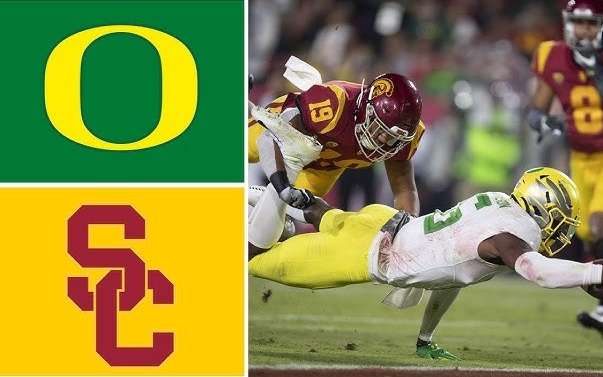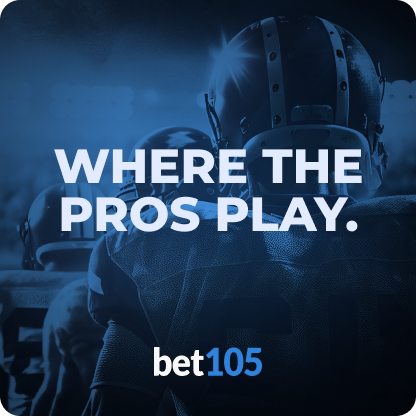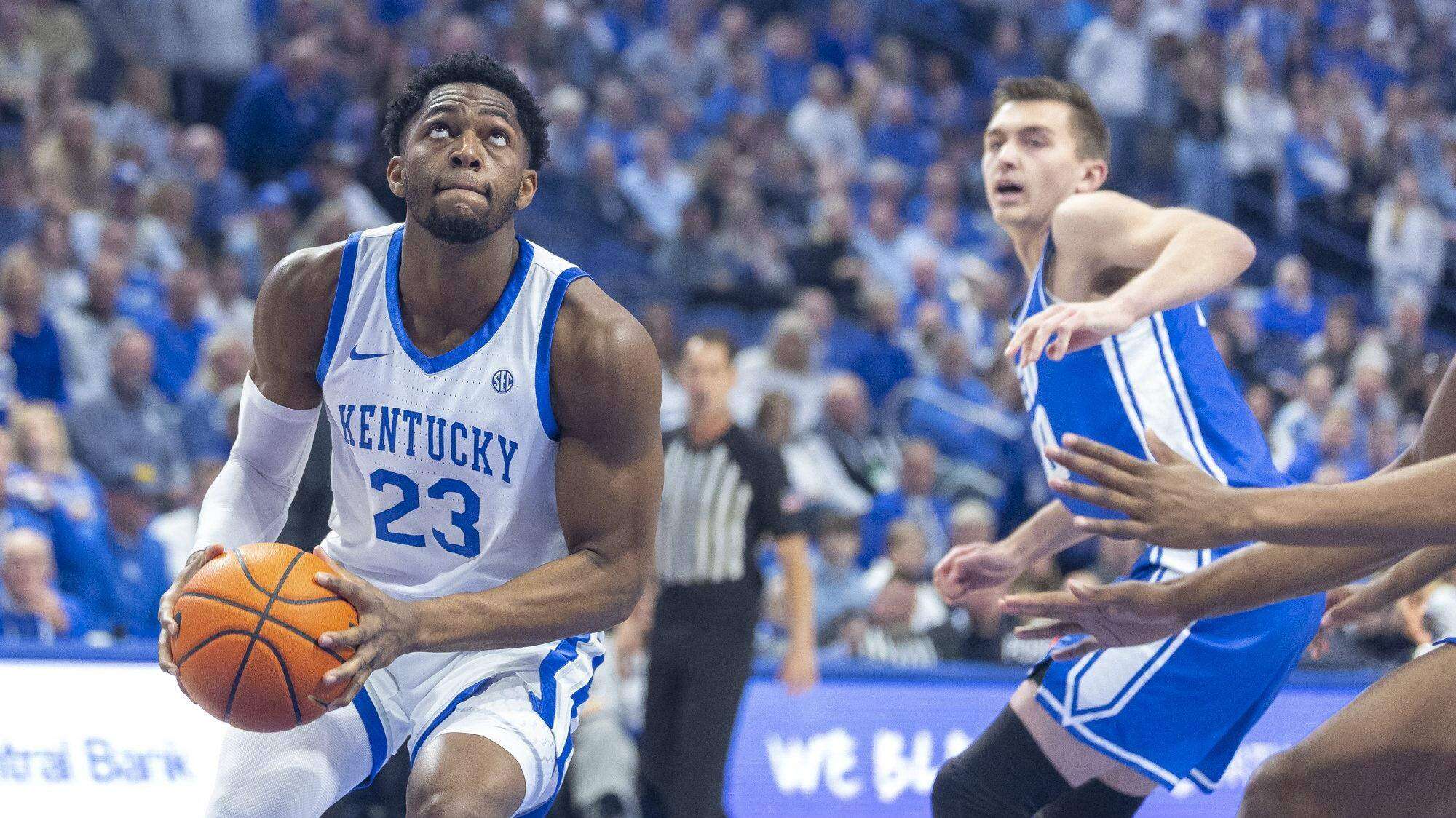USC vs. Oregon Analysis: Big Ten Championship Implications – Betting Odds & Game Preview for November 22
Saturday brings us one of the most anticipated matchups of the college football season when the No. 16 USC

Saturday brings us one of the most anticipated matchups of the college football season when the No. 16 USC Trojans travel north to face the No. 6 Oregon Ducks in a pivotal Big Ten showdown. With College Football Playoff berths on the line and conference supremacy at stake, this Week 13 clash at Autzen Stadium promises fireworks, high stakes, and compelling betting dynamics.
Lincoln Riley’s offensive juggernaut meets Dan Lanning’s defensive fortress in what could be the game that defines both teams’ seasons. The winner positions themselves perfectly for a playoff spot, while the loser faces an uphill battle to keep championship hopes alive.
Here are our USC vs. Oregon analysis and comprehensive game breakdown for Saturday, November 22, 2025.
USC vs Oregon Game Analysis: Breaking Down the Spread and Total
Here are our early thoughts on the spread and total for this marquee Big Ten showdown. We’ll have comprehensive analysis of prop bets, same-game parlays, and additional betting angles as kickoff approaches.
Analyzing the Spread: USC +10
The Oregon Ducks are rightfully favored in this matchup, boasting an undefeated record and one of college football’s most complete teams. The 10-point spread at bet105 reflects Oregon’s dominance this season and significant home-field advantage.
Lincoln Riley’s offense is an absolute scoring machine. The Trojans rank second nationally in both EPA (Expected Points Added) per play and offensive success rate, averaging a staggering 38.2 points per game and an elite 7.4 yards per play. This isn’t just a good offense—it’s a historically efficient one that can strike from anywhere on the field.
Quarterback Jayden Maiava has developed remarkable chemistry with his receiving corps, particularly standout targets Makai Lemon and Ja’Kobi Lane. These receivers create separation at will and consistently win one-on-one matchups downfield. Oregon’s secondary, while talented and ranking in the Top 10 in EPA per pass allowed, hasn’t faced an aerial attack of this caliber all season.
The Ducks have cruised through their schedule, but they haven’t been tested by an offense with USC’s explosive capabilities. When the Trojans fell to Notre Dame earlier this season—a team with defensive talent similar to Oregon—they lost by exactly 10 points despite suffering from a negative turnover margin. That performance provides a telling data point about USC’s competitiveness against elite competition.
Riley’s offensive scheme excels at creating mismatches and generating chunk plays. The Trojans can score in clusters, meaning they’re rarely out of competitive position. Even if Oregon builds an early lead—which is certainly possible given their home-field advantage—USC possesses the firepower to keep the margin manageable throughout the contest.
There’s also a crucial matchup dynamic to consider: Oregon’s strength is defending the pass, but USC’s passing attack is among the nation’s elite. While the Ducks rank in the Top 10 in EPA per pass allowed, the Trojans’ passing offense ranks second in EPA per pass. This creates a fascinating chess match between unstoppable force and immovable object.
The Trojans have performed well against the spread in 60% of their games this season, and they’ve consistently elevated their performance against elite competition. This team tends to perform at its highest level when stakes are greatest.
Analyzing the Total: Over/Under 59.5
While both teams feature potent offenses, several factors suggest this total presents an interesting analysis point.
Consider Oregon’s offensive philosophy. Dan Lanning has deliberately moved away from the Chip Kelly era of fast-paced, high-scoring shootouts. Today’s Ducks are methodical, run-first, and clock-controlling. They lead the nation in EPA per rush and consistently rank among the leaders in time of possession. Oregon doesn’t want to get into a track meet with USC—they want to shorten the game, control tempo, and limit the Trojans’ offensive possessions.
This ground-and-pound approach naturally keeps the clock moving. Fewer possessions means fewer scoring opportunities for both teams. When Oregon gets the ball, expect long, sustained drives featuring Jordan James and the Ducks’ elite rushing attack. These time-consuming possessions will impact the overall pace and scoring potential of the game.
USC has demonstrated a clear trend toward different scoring patterns recently. Their last five contests show varied totals, suggesting opponents have found different defensive approaches to their attack, or that USC itself has adjusted their style as games carry greater weight late in the season.
While USC’s offense is explosive, their defense—though challenged in run defense (ranking 126th in rushing success rate allowed)—has shown the ability to create timely stops when the stakes are highest. They understand the magnitude of this game, and defensive focus typically intensifies in playoff elimination scenarios.
Oregon’s defense presents significant challenges for any offense. Their secondary is ball-hawking and physical, ranking among the nation’s best in limiting explosive passing plays. They may not shut down USC entirely, but they can force the Trojans to sustain longer drives—exactly the kind of possessions that eat clock and affect overall scoring output.
The environment also matters. Autzen Stadium is one of college football’s most hostile venues, and crowd noise can disrupt offensive timing and communication. This could lead to more conservative play-calling from Riley, particularly early in the game as USC tries to find their rhythm in a deafening atmosphere.
The stakes deserve consideration as well. This isn’t a regular season game—this is a playoff eliminator. Both coaching staffs understand that a critical turnover or defensive breakdown could end their team’s championship dreams. High-stakes games often play out differently than regular season matchups, with coaches potentially favoring field position, punting situations, and conservative fourth-down decisions.
Weather could also be a factor in late November in Eugene. Oregon weather in November can be unpredictable, with rain and wind possible. Any precipitation or adverse conditions would naturally favor lower scoring.
Breaking Down the Matchup: Statistical Deep Dive
USC’s Offensive Firepower
The Trojans’ offensive statistics are eye-popping across virtually every metric:
- 38.2 points per game (7th nationally)
- 7.4 yards per play (4th nationally)
- 2nd in EPA per play
- 2nd in offensive success rate
- Elite passing efficiency with multiple NFL-caliber receivers
Jayden Maiava has emerged as one of the nation’s most efficient quarterbacks, completing 68% of his passes while averaging 9.2 yards per attempt. His decision-making has improved dramatically throughout the season, and he’s protected the football while still being aggressive downfield.
The receiving corps is where USC truly shines. Makai Lemon has developed into a legitimate All-American candidate, averaging over 18 yards per reception with game-breaking speed and route-running precision. Ja’Kobi Lane provides a perfect complement—a possession receiver with reliable hands who consistently moves the chains on third down.
Together, these receivers create impossible coverage scenarios. Defenses must respect USC’s vertical passing game, which opens up the intermediate routes and allows Riley to exploit favorable matchups. The Trojans also excel in play-action, with Riley using his talented running backs to keep defenses honest and create explosive passing opportunities.
Lincoln Riley’s offensive scheme is perhaps the most creative in college football. He utilizes motion, misdirection, and pre-snap shifts to identify defensive coverages and create numerical advantages. His ability to script the opening drive is legendary—USC has scored on their first possession in eight of their eleven games this season.
USC’s Defensive Vulnerabilities
While the Trojans’ offense garners most of the attention, their defense presents significant concerns:
- 126th in rushing success rate allowed
- Vulnerable to explosive run plays
- Struggles to stop physical, downhill rushing attacks
- Improved pass defense but still susceptible to big plays
The run defense has been USC’s Achilles heel all season. They’ve been gashed by physical running backs who establish the line of scrimmage and pound the ball between the tackles. This is precisely Oregon’s strength and game plan, creating a concerning matchup for Trojan fans.
USC’s pass defense has improved as the season progressed, but they remain vulnerable to disciplined passing attacks that work the intermediate zones. They’ve struggled particularly against tight ends and running backs out of the backfield—two elements present in Oregon’s offensive scheme.
However, the Trojans do generate pressure up front when they commit to the pass rush. Their defensive line features athletic edge rushers who can disrupt timing and force quarterbacks into quick decisions. If USC can establish early stops and force Oregon into obvious passing situations, their defense becomes significantly more effective.
Oregon’s Ground Game Dominance
The Ducks have built their offensive identity on physical, downhill rushing:
- 1st in EPA per rush
- Top 15 in rushing success rate
- Averaging 5.8 yards per carry as a team
- Multiple rushing threats including QB Dillon Gabriel
Jordan James has been a revelation in the Oregon backfield, combining power and vision to consistently break tackles and gain yards after contact. He’s the type of physical runner who wears down defenses over four quarters, and against USC’s suspect run defense, he could have a field day.
Dillon Gabriel adds another dimension to Oregon’s rushing attack. His mobility keeps defenses honest and allows the Ducks to run RPO (run-pass option) concepts that create numerical advantages. Gabriel’s ability to pull the ball and gain crucial first downs with his legs has been instrumental in Oregon’s success on third down.
The Ducks’ offensive line is experienced, physical, and technically sound. They consistently win at the point of attack and create running lanes against even the stoutest defensive fronts. Against USC’s weakness in run defense, Oregon should have significant advantages up front.
Dan Lanning’s commitment to the running game isn’t just philosophical—it’s strategic. By controlling the clock and dictating tempo, Oregon limits opponents’ possessions and keeps games out of the opponents’ hands. This approach has been particularly effective at home, where Autzen Stadium’s noise makes offensive communication difficult for visiting teams.
Oregon’s Defensive Excellence
The Ducks’ defense is where they truly separate themselves from most teams:
- Top 10 in EPA per pass allowed
- Elite secondary with multiple NFL prospects
- Strong against explosive plays
- Excellent in red zone situations
Oregon’s secondary features lockdown corners who can play man coverage and allow the Ducks to bring additional pressure. Their safeties are rangy and intelligent, rarely making mental mistakes or allowing deep completions. This will be USC’s toughest test in pass coverage all season.
The Ducks also excel at creating turnovers. They rank in the Top 25 nationally in takeaways, with a knack for forcing fumbles and picking off passes in critical situations. Against a USC team that’s generally careful with the ball, Oregon’s ability to create game-changing turnovers could be the difference.
Dan Lanning’s defensive scheme is aggressive and multiple. He disguises coverages, brings pressure from unexpected angles, and creates confusion with pre-snap movement. These tactics have frustrated quarterbacks all season, and Maiava will need to be at his absolute best to decipher Oregon’s defensive looks.
The Ducks’ front seven is physical and disciplined, setting the edge effectively against outside runs and collapsing the pocket on passing downs. While they’ll have their hands full with USC’s passing attack, they have the talent and coaching to make life difficult for the Trojans’ offensive line.
Betting Angles and Additional Considerations
Home Field Advantage at Autzen Stadium
Autzen Stadium’s reputation as one of college football’s most intimidating venues isn’t hyperbole—it’s earned through decades of opposing teams struggling to execute in Eugene’s cauldron of noise.
The stadium’s unique design funnels sound directly onto the field, with crowd noise regularly exceeding 120 decibels during crucial moments. This makes offensive communication nearly impossible for visiting teams. USC will need to rely heavily on hand signals and silent counts, which can disrupt timing and lead to false starts and miscommunication.
Oregon is 8-0 at home this season and hasn’t lost at Autzen in over two years. The Ducks feed off their crowd’s energy, and you can expect the atmosphere to be electric for a top-20 matchup with playoff implications. This intangible advantage is worth at least 3-4 points on the spread.
Coaching Matchup: Riley vs. Lanning
This game features two of college football’s brightest coaching minds, each with distinct philosophies and approaches.
Lincoln Riley is an offensive virtuoso who’s produced multiple Heisman Trophy winners and consistently ranks among the nation’s top scoring offenses. His play-calling is creative, his preparation meticulous, and his ability to develop quarterbacks is second to none. Riley will have answers for Oregon’s defensive schemes, and he’ll likely script the first 15-20 plays to test the Ducks’ coverage and establish favorable matchups.
Dan Lanning represents the new generation of head coaches—young, energetic, and analytically driven. His defenses are consistently elite, his teams are disciplined and well-prepared, and his program culture emphasizes toughness and accountability. Lanning won’t be intimidated by Riley’s offensive reputation; instead, he’ll trust his defense to execute their game plan and force USC into uncomfortable situations.
The coaching matchup slightly favors Lanning due to home-field advantage and having the personnel to match up with USC’s strengths. However, Riley has consistently delivered in big games throughout his career, and you should never count out his ability to scheme open his playmakers.
Key Matchups to Watch
USC’s Wide Receivers vs. Oregon’s Secondary: This is the game within the game. If Lemon and Lane can consistently win one-on-one matchups downfield, USC covers easily. If Oregon’s corners can limit explosive plays and force USC into longer, sustained drives, the Ducks control the game.
Oregon’s Running Game vs. USC’s Run Defense: Oregon will test USC’s suspect run defense early and often. If James and the Ducks’ rushing attack establishes dominance, they’ll control time of possession and limit USC’s offensive opportunities. If the Trojans can somehow contain Oregon’s ground game, the Ducks will be forced into more obvious passing situations where USC’s defense becomes more effective.
USC’s Offensive Line vs. Oregon’s Pass Rush: Maiava has thrived behind good pass protection this season, but Oregon brings more pressure than most teams USC has faced. If the Trojans’ offensive line can keep Maiava clean in the pocket, he’ll pick apart Oregon’s secondary. If the Ducks consistently pressure Maiava and force him off his spot, expect a long day for USC’s offense.
Historical Context and Trends
USC is 2-2 in true road games this season, with both losses coming to ranked opponents. The Trojans have shown they can compete anywhere against anybody, but winning on the road in hostile environments remains a challenge. Their two road victories came against inferior opponents, so Eugene presents their most difficult road test yet.
Oregon is undefeated this season and has won 15 consecutive home games. The Ducks simply don’t lose at Autzen Stadium, and betting against them at home requires strong conviction. However, past performance doesn’t guarantee future results, and USC’s offense presents challenges unlike anything Oregon has faced.
Against the spread, USC has been profitable as an underdog this season, covering in four of six games when getting points. Lincoln Riley’s teams consistently play better than expected when doubted, and the Trojans will be motivated to prove they belong among college football’s elite.
Oregon has been dominant against the spread at home, covering in seven of eight games at Autzen this season. The Ducks win big at home and rarely let teams hang around. This trend suggests the 10-point spread might not be enough, but USC’s offensive firepower makes them a dangerous underdog.
Injury Report and Team Health
As of publication, both teams report relatively clean injury reports, with no significant contributors listed as questionable or doubtful. This is crucial for a game of this magnitude, as both teams will have their full arsenal available.
USC’s offensive line is healthy, which is critical for protecting Maiava against Oregon’s pass rush. Any injuries to the Trojans’ offensive front would significantly impact their ability to execute Riley’s passing game.
Oregon’s running back rotation is fully healthy, giving Lanning options to keep his ball carriers fresh throughout the game. The Ducks’ ability to rotate talented backs without losing production is a significant advantage in the fourth quarter.
Always check for late-week injury updates before finalizing any wagers, as key absences can dramatically alter game dynamics and betting value.
Additional Betting Markets to Consider
First Half Spread: USC +6.5
The first-half spread presents an interesting analysis point. USC has been excellent in first quarters this season, often jumping out to early leads behind Riley’s scripted opening drives. The Trojans’ ability to start fast gives them opportunities to either lead or keep games close through the first 30 minutes of play.
Team Totals
USC Team Total: 24.5: USC’s offensive talent and explosive capabilities suggest they should be capable of reaching the mid-20s even against Oregon’s stout defense. The question becomes whether Oregon’s defensive excellence and home-field advantage can limit the Trojans below this threshold.
Oregon Team Total: 34.5: The Ducks’ methodical, clock-controlling style often leads to scores in the 28-31 range rather than 35+. Against a motivated USC defense playing in a playoff elimination scenario, Oregon’s ability to reach the mid-30s will depend on their rushing attack’s effectiveness.
Quarterback Performance Analysis
Jayden Maiava Passing Yards: 285.5: Oregon’s strength is defending the pass, but Maiava will likely attempt 35+ passes given game flow expectations. Volume and the potential need to play catch-up creates an interesting dynamic for Maiava’s yardage total.
Dillon Gabriel Passing Yards: 225.5: Oregon’s run-first approach typically limits Gabriel’s passing attempts, especially if the Ducks establish early success on the ground. Gabriel’s passing volume will largely depend on USC’s ability to contain Oregon’s rushing attack.
How to Watch USC vs Oregon
- Date: Saturday, November 22, 2025
- Time: 3:30 p.m. ET / 12:30 p.m. PT
- Location: Autzen Stadium, Eugene, OR (Capacity: 54,000)
- TV: CBS
- Streaming: Paramount+
- Radio: USC Radio Network, Oregon Sports Network
The game will be broadcast nationally on CBS with Gary Danielson and Brad Nessler on the call. Jenny Dell will provide sideline reporting. Paramount+ subscribers can stream the game live, while traditional cable and satellite providers will carry the broadcast on CBS.
For fans attending the game, expect temperatures in the low 50s with possible rain. Autzen Stadium will be at full capacity, and the atmosphere will be electric for this crucial Big Ten showdown.
USC vs Oregon Odds at bet105
- USC vs. Oregon Spread: Oregon -10
- USC vs. Oregon Moneyline: USC +340, Oregon -425
- USC vs. Oregon Over/Under: 59.5 points
- First Half Spread: Oregon -6.5
- USC Team Total: 24.5 points
- Oregon Team Total: 34.5 points
Odds are correct at the time of publishing and are subject to change. Always verify current lines before placing wagers.
The Bottom Line: Key Factors to Consider
This Big Ten championship-caliber matchup presents several compelling angles for analysis.
Oregon enters undefeated and playing at home in one of college football’s most hostile environments. The Ducks’ methodical offensive approach and elite defense have proven effective all season. However, USC’s explosive offense and Lincoln Riley’s play-calling genius create the kind of matchup challenges Oregon hasn’t faced in 2025.
The 10-point spread at bet105 reflects Oregon’s season-long dominance and home-field advantage, while acknowledging USC’s ability to score quickly and keep games competitive. The Trojans’ capacity to strike from anywhere on the field means they remain dangerous regardless of game flow.
The 59.5-point total accounts for both teams’ offensive capabilities while factoring in Oregon’s clock-controlling style and the high-stakes nature of a playoff elimination game. Game management decisions by both coaching staffs will likely be more conservative than in typical regular season contests.
Key Considerations:
- USC’s offensive firepower vs. Oregon’s defensive excellence
- Home-field advantage at Autzen Stadium
- USC’s struggles defending the run vs. Oregon’s nation-leading rushing attack
- High stakes potentially leading to conservative play-calling
- Weather conditions in Eugene in late November
Head over to bet105 to review current odds and lines for this exciting matchup. With College Football Playoff berths on the line and two of the nation’s best teams squaring off, this Saturday afternoon showcase promises drama, intensity, and fascinating strategic chess matches.
Read our predictions for other notable games in Week 13 of NCAA Football;
Missouri vs. Oklahoma – Nov. 22 at 12:00pm ET






